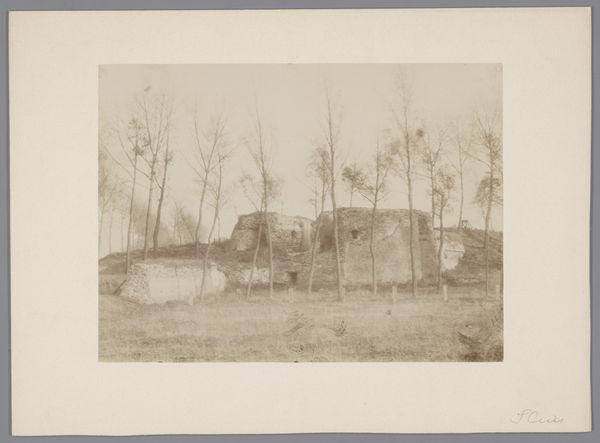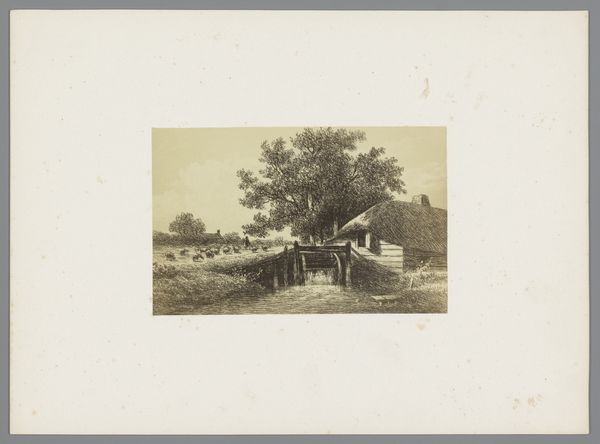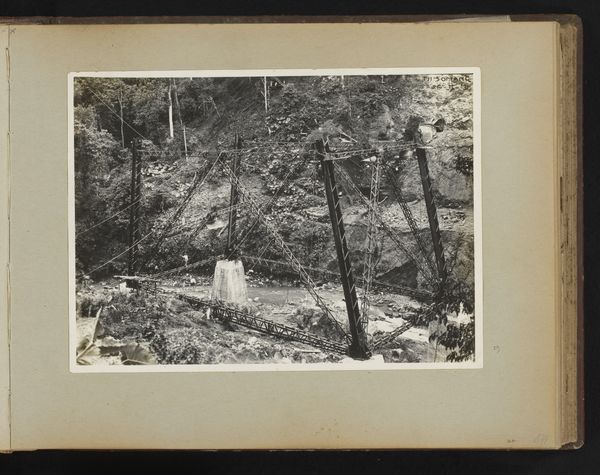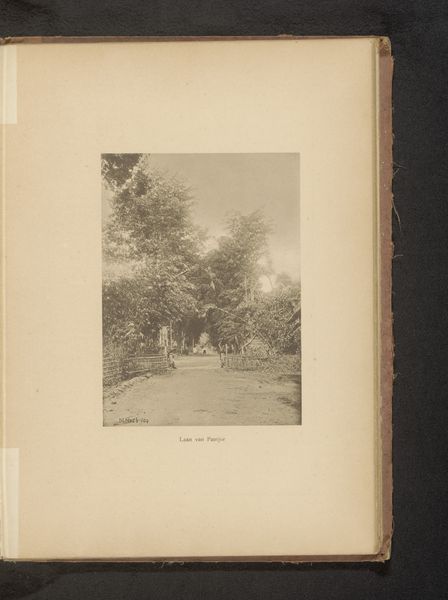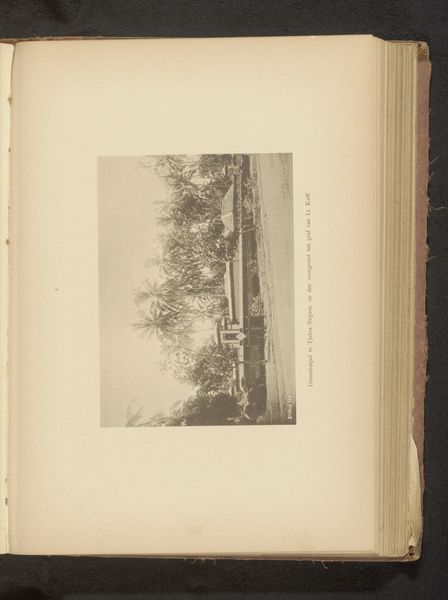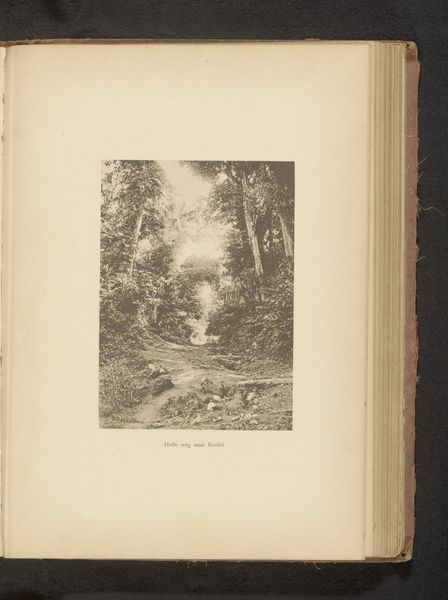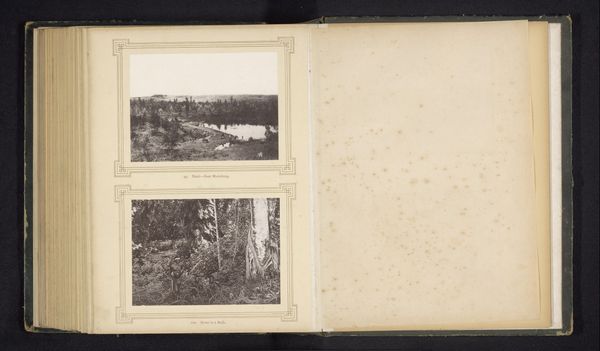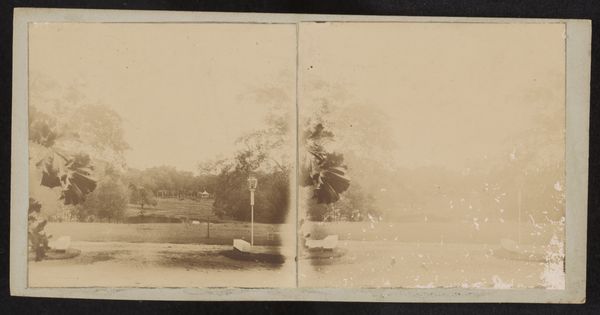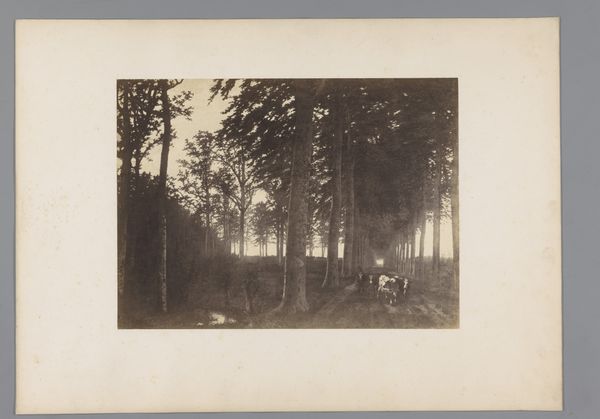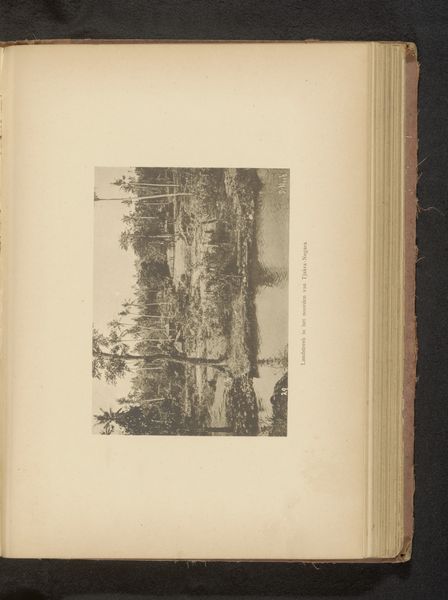
photography
#
landscape
#
photography
#
realism
Dimensions: height 156 mm, width 119 mm
Copyright: Rijks Museum: Open Domain
Curator: There’s a stillness in this photograph, a quiet hum of industry captured at its nascent stage. What strikes you immediately about this scene? Editor: It's the rawness, the almost brutal simplicity. That rickety wooden structure dwarfed by the barren tree above. It feels fragile and temporary, like a forgotten corner of the world about to be changed forever. Curator: Indeed. This albumen print, created before 1866 by S.G. & T.W. Rogers, is titled “Gezicht op een olieput,” or "View of an Oil Well". Consider the date. The Civil War in the United States, a conflict fundamentally intertwined with industrial expansion, had a profound effect on society that still echoes in our contemporary climate. Editor: And you see the seeds of that future in this humble image. The tree seems to reach out desperately over this symbol of change. Trees as symbols recur, don’t they? From sacred groves to the tree of knowledge, there's a connection between our growth, prosperity and the earth. It feels like an early photograph might seek out ways to convey messages encoded elsewhere, using the symbolism of light and shade as the camera is being understood. Curator: Absolutely. The presence of this single tree is very loaded; consider too the technology at the center, this oil well. What stories might it tell us about labor and displacement in nineteenth-century extraction? Whose lives would become inextricably tied to its operation? Photography served to document and glorify progress while eliding those truths. Editor: Look at how the tones work – all that sepia… even the trees in the background blend in a muted haze that focuses your attention right on that dark opening that exposes a portal in the middle of all that promise, or doom. Curator: Yes, the composition centers the extractive industry while the people powering it are nowhere to be seen. What’s preserved here isn’t just the technology or landscape, but an implicit set of values around what constituted progress, around who was written into the narrative and who was not. Editor: Ultimately, the picture does encapsulate a specific period of promise and apprehension through a careful arrangement of these historical markers of what was soon to change America. And it’s all locked inside those visual cues. Curator: It is through those very layers of historical, symbolic meaning that it reverberates today, prompting us to think critically about the legacy of progress and the stories that often go unseen.
Comments
No comments
Be the first to comment and join the conversation on the ultimate creative platform.
